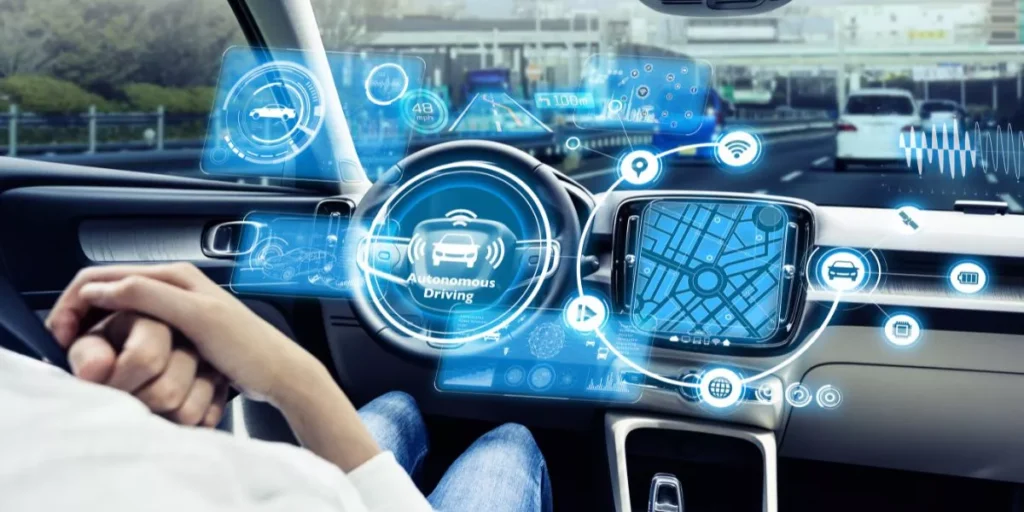
As you navigate the streets, imagine the possibilities of autonomous cars seamlessly blending into everyday traffic. These vehicles have come a long way in handling various driving tasks independently, but what about the challenges they still encounter? From bustling cityscapes to sudden human decisions, autonomous cars face a complex road ahead. Stay tuned to uncover the current capabilities and limitations shaping the future of transportation.
Advancements in Autonomous Technology
Advancing rapidly, autonomous technology is revolutionizing the way vehicles operate on roads today. Imagine sitting behind the wheel of a car that can navigate through traffic, change lanes, and park itself—all without any input from you. These advancements aren’t just a thing of the future; they’re here now. Companies like Tesla, Waymo, and Uber are at the forefront of this technological revolution, constantly pushing boundaries and improving the capabilities of autonomous vehicles.
One major aspect where autonomous technology excels is in its ability to enhance convenience. Picture a scenario where you can summon your car to pick you up from a busy street or have it drop you off at your desired location before finding its own parking spot. These conveniences may seem like luxuries now, but they’re rapidly becoming the norm in the automotive industry.
As autonomous technology continues to evolve, we can expect even more exciting developments in the way we interact with our vehicles. The future of transportation is being reshaped before our eyes, and you’re at the forefront of this incredible journey.
Safety Features and Systems
When considering autonomous vehicles, one crucial aspect to examine is their array of safety features and systems. These advanced technologies play a pivotal role in ensuring a safe driving experience for passengers and pedestrians alike. One of the primary safety features found in autonomous cars is the collision avoidance system. This system utilizes sensors, cameras, and radar to detect obstacles in the vehicle’s path and automatically apply brakes or steer away to prevent accidents.
Moreover, autonomous vehicles are equipped with adaptive cruise control, which maintains a safe distance from other vehicles by adjusting the speed accordingly. This feature not only reduces the likelihood of rear-end collisions but also enhances overall traffic flow efficiency. Additionally, lane-keeping assist and automatic emergency braking systems contribute to preventing accidents caused by lane deviation or sudden obstacles on the road.
Challenges in Real-World Scenarios
Navigating through real-world scenarios, autonomous cars encounter a myriad of challenges that test their capabilities and technological advancements. One significant challenge lies in unpredictable human behavior, such as pedestrians jaywalking or other drivers making sudden, unexpected maneuvers. Autonomous vehicles must swiftly analyze and respond to these dynamic situations to ensure safety for all road users.
Moreover, adverse weather conditions like heavy rain, snow, or fog can impede sensors’ effectiveness, leading to potential navigation errors. Autonomous cars must enhance their sensor technologies to accurately perceive their surroundings in various weather scenarios.
Additionally, navigating complex urban environments with dense traffic, intricate road layouts, and diverse signage poses a challenge. Autonomous vehicles must interpret these elements accurately to make informed driving decisions, reducing the risk of accidents and ensuring smooth navigation.
Furthermore, issues like cybersecurity threats and potential system malfunctions present ongoing challenges that require continuous technological advancements and rigorous testing. Overcoming these obstacles will be crucial for the widespread adoption and success of autonomous cars in real-world scenarios.
Future Prospects and Developments
In considering the future prospects and developments of autonomous cars, one must acknowledge the critical role of ongoing technological innovations in shaping their evolution. Advancements in artificial intelligence, machine learning, sensor technology, and connectivity are paving the way for enhanced autonomous driving capabilities. These developments are expected to lead to safer roads, reduced traffic congestion, lower emissions, and increased accessibility for individuals with mobility challenges.
One of the key future prospects is the progression towards higher levels of autonomy, where vehicles can operate without any human intervention in specific conditions. This transition will require refining algorithms, improving sensor accuracy, and establishing robust communication systems between vehicles and infrastructure.
Moreover, the integration of autonomous vehicles with smart city initiatives holds promise for optimizing traffic flow, parking efficiency, and overall urban planning. Collaborative efforts between automakers, tech companies, regulators, and urban planners will be essential to realize the full potential of autonomous cars in transforming the future of transportation.
Automotive & Tools














